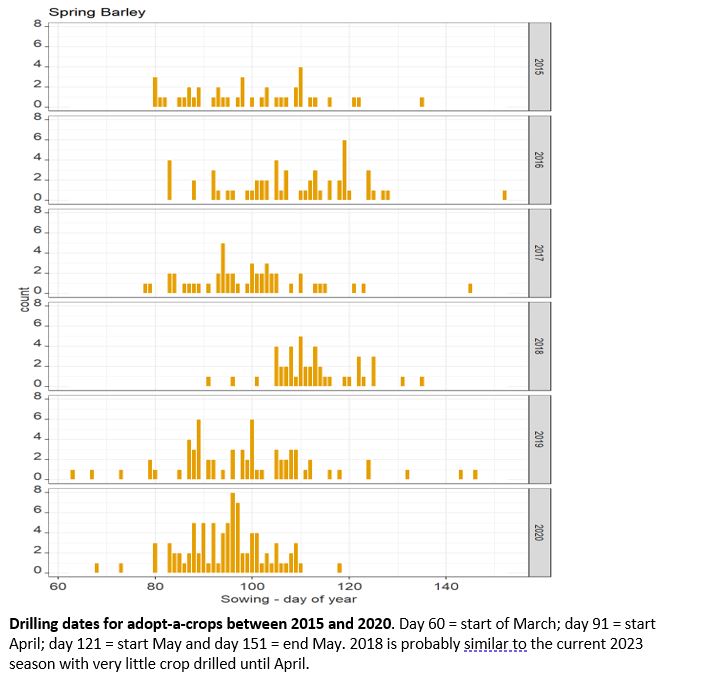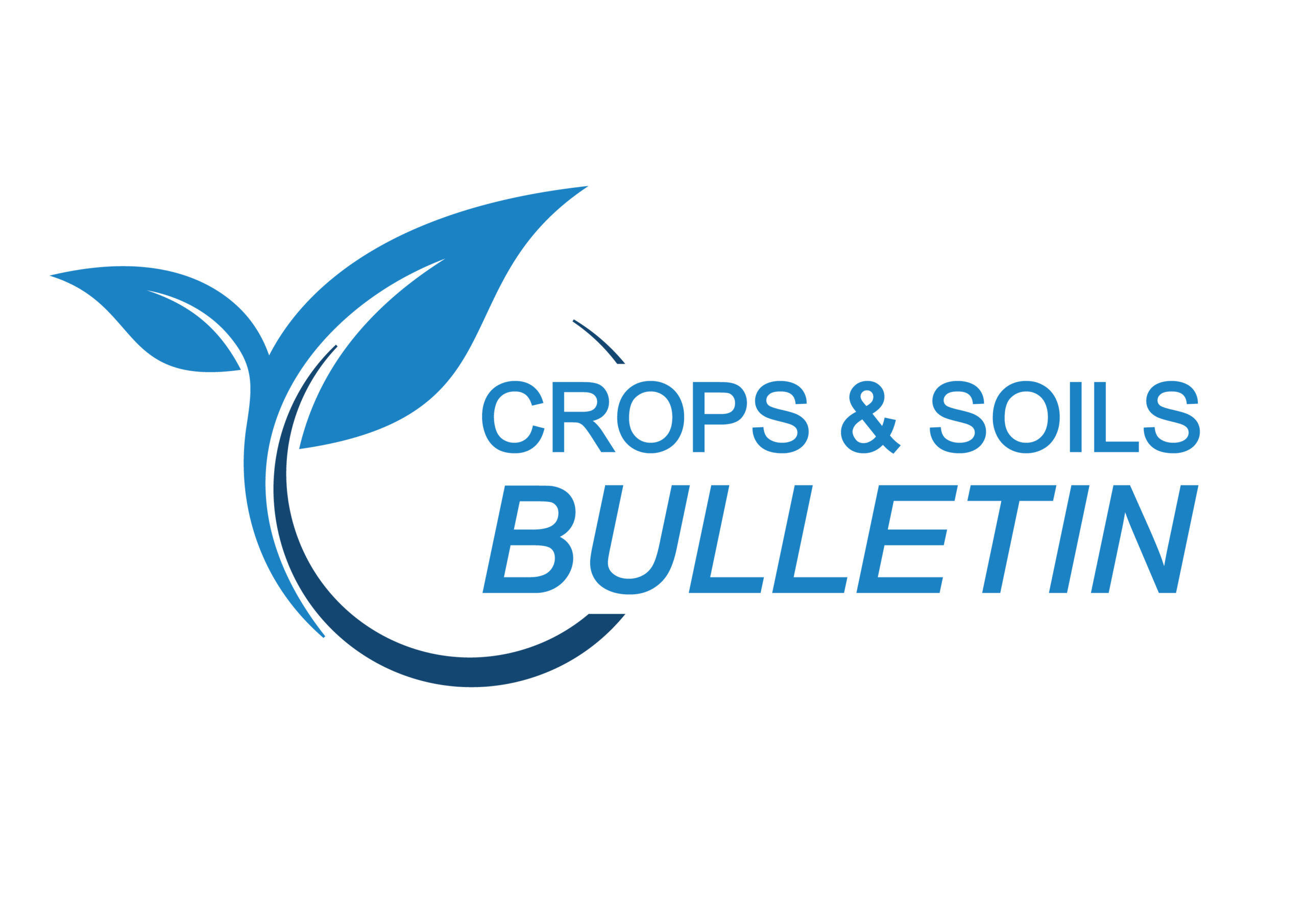Crop Health Update
25 May 2023Winter Cereals
It remains a fairly challenging year for plant health with relatively high levels of disease overwintering in our winter crops and a wet, cool spring exacerbating disease levels and often delaying key spray timings. In wheat crops, Septoria and yellow rust persist despite T1 fungicides being applied, and in winter barley crops rhynchosporium, net blotch and mildew are common, and we also have occasional reports of brown rust in the crop. For all crops it has been relatively stressful- with swings between day and night temperatures and some nutritional and spray scorch to deal with. It was a slow start to the season and T1 fungicides on both winter wheat and barley were often delayed and crops have jumped rapidly through the growth stages since then. If timings have gone array, then try and get back on track and try not to compromise later timings by also delaying them, even if gaps are shorter than you would have liked.
Winter barley T2s should ideally be applied between booting and ear fully emerged and should aim to manage any established foliar disease and also protect against any ramularia risk – see the related technical article on ramularia. Additional T3 fungicide in winter barley are very seldom justified.
Flag leaves are starting to emerge in wheat crops, and this is the most important of the spray timings in wheat to protect the upper leaves that drive yield. As such the most effective fungicide options should be deployed and trial data indicates that the newer azole mefentrifluconazole with a strong SDHI in Revystar XE is one of the most effective options. The other strong option is to use the QiI active fenpoxamid with the azole prothioconazole in Pentiga. To reduce the risk of fungicide resistance, try and mix and alternate actives from different groups throughout your spray programme, and mixing in the multisite fungicide folpet adds to anti-resistance strategies. If you can’t get your first-choice products look carefully at alternative options to make sure they address your main risks. For example, mixes with strobilurins may help with rust but will not really provide benefits for septoria management.
Ear sprays remain very important in wheat, especially in a wet summer. They add to Septoria protection for the upper leaves and also protect against ear disease. Best timings are early in ear emergence as infection risk is highest where wet weather coincides with flowering. Fungicide activity drops sharply if the spray is too early or too late around this. We are reliant on azoles at this timing for effective management of mycotoxin forming fusarium fungi, but mixes with multisites, strobilurins or SDHIs can be used according to the disease risks you are presented with. Adhere to statutory label instructions on last application timings and maximum application numbers to crops. SDHI and strobilurin containing products may only be applied twice for example.
Adopt-a-crop
Fungicide programmes across all crops should be tailored to disease risk and also respond to the level of control seen from earlier fungicide inputs. You can also compare your crops to information on disease risk and growth stage from local monitoring crops in your area in the adopt-a-crop data base at this link https://adoptacrop.sruc.ac.uk/
Spring Barley
Spring barley drilling has been later than usual and most of the crop went in in April and May with very little drilled in February and March. In a more normal year almost half the crop would be drilled by the end of March as you can see from sow dates (below) extracted from the adopt-a-crop database.
Spring barley drilling dates for adopt-a-crops between 2015 and 2020

Spring barley crops are now growing rapidly and emergence and brairds look good and in many cases growers compensated for anticipated reduced tiller by increasing seed rates. Spring weed germination has been high, exacerbated by moist soils. Early fungicide sprays in spring barley are usually applied from mid tillering to the start of stem extension are earlier than in the winter crop since the spring crop grows so rapidly through the growth stages. For resistant varieties in dry springs the risk of foliar disease is quite low, and fungicides can be omitted or applied at very reduced rates but in a wetter season and on weaker varieties than some protection against foliar disease may be justified and prothioconazole- and SDHI or strobilurin mix products do well.
Ramularia in spring barley remains one of the trickiest challenges and a wetter season will exacerbate the risk.
Sign up to the FAS newsletter
Receive updates on news, events and publications from Scotland’s Farm Advisory Service

